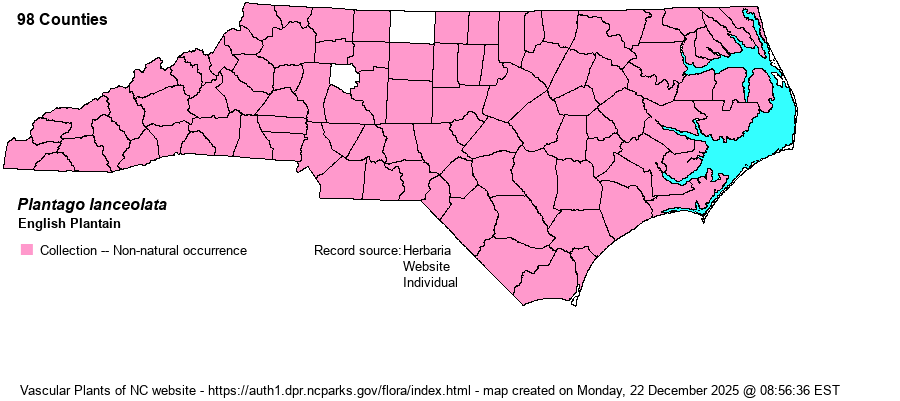| Author | L. | |
| Distribution | Throughout the state; no doubt in every county.
Native of Europe; in N.A. throughout the U.S. and southern Canada. | |
| Abundance | Common to very common, except uncommon to infrequent in the Sandhills proper. Despite its broad distribution in NC, populations are seldom if ever large enough to displace native vegetation, as most sites for it are ruderal ones. | |
| Habitat | Roadsides, lawn weed, campus weed, fields, barnyards, meadows, trailsides, clearings. | |
| Phenology | Flowering and fruiting April-October. | |
| Identification | English Plantain should be a very familiar lawn weed. It has a basal group of lance-shaped to broadly lance-shaped leaves, each with impressed nerves; many of the leaves are erect to ascending. There may be 1-10 or so leafless flowering stems (scapes) to nearly a foot tall, each topped with a single ovoid or cylindrical, dense head of tiny flowers. The rare native P. sparsiflora has a very similar gestalt, but its scape is terete (vs. 5-angled in P. lanceolata) and the head is rather open with space between most flowers, as opposed to tightly packed flowers in P. lanceolata and most others in the genus. | |
| Taxonomic Comments | | |
| Other Common Name(s) | | |
| State Rank | SE | |
| Global Rank | G5 | |
| State Status | | |
| US Status | | |
| USACE-agcp | FACU link |
| USACE-emp | UPL link |

